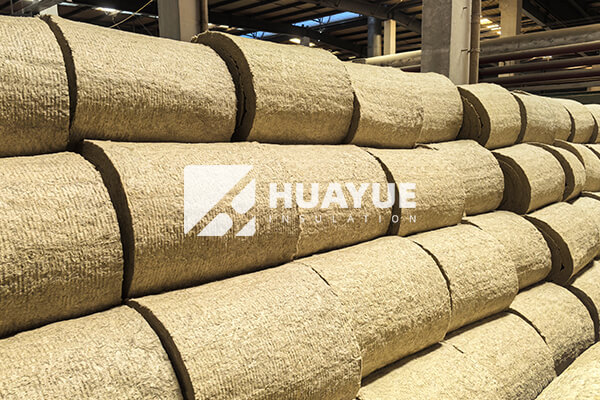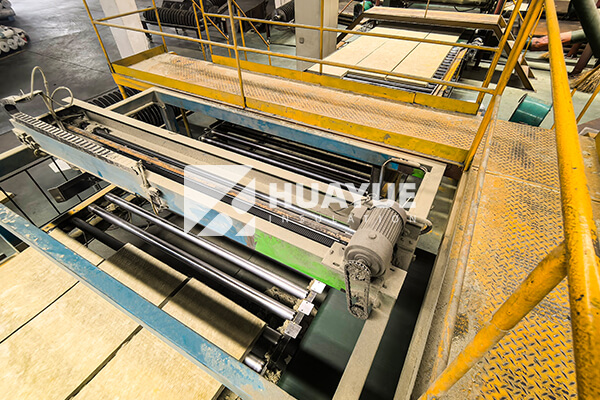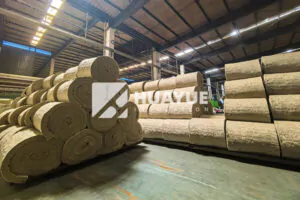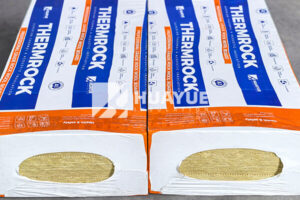What Are the Key Benefits of Rock Wool Insulation?
Problems like energy loss and soaring utility bills can frustrate any facility manager or homeowner. Investing in the right insulation material can completely change how a building feels and operates.
Rock wool, sometimes called stone wool, is an insulation material with a unique blend of fire resistance, high thermal efficiency, and excellent sound absorption, making it a reliable choice for demanding environments.

Tired of short-lived, hard-to-maintain insulation? Many industries turn to rock wool for lasting performance. Let me walk you through how rock wool stands out and what it could mean for your next project.
Key Properties of Stone Wool Insulation?
Energy loss and workplace discomfort can disrupt operations and affect employee productivity. Choosing high-performance insulation is a cornerstone for safety and efficiency.
Rock wool insulation is non-combustible, water-repellent, stable under pressure, and resists mildew, making it suitable for buildings, industrial tanks, and piping systems.

When I first started specifying insulation for industrial tanks, I noticed rock wool’s ability to handle harsh weather and mechanical stress. It keeps its insulating value over time. The material is made from natural basalt and recycled slag, spun into fine fibers.
Let’s break down stone wool’s main benefits:
| Property | Why It Matters | Stone Wool Performance |
|---|---|---|
| Fire Resistance | Reduces fire risk, slows spread | Withstands up to 1000°C |
| Thermal Insulation | Cuts heating/cooling costs | λ ~0.034-0.040 W/(m·K) |
| Acoustics | Reduces transmission of noise | NRC up to 1.0 |
| Water Repellency | Stops moisture intrusion, mold | Hydrophobic treatment applied |
| Compression | Bears mechanical loads long-term | Retains thickness and shape |
In summary, stone wool insulation can lower long-term costs, improve operational safety, and creates quieter, more stable workspaces.
What Are the Disadvantages of Rock Wool Insulation?
It is natural to ask if a product that performs so well has any drawbacks. Making an informed decision means weighing both benefits and drawbacks.
The main disadvantages of rock wool insulation are higher material costs, potential dust during installation, and the need for protective gear to prevent irritation.

The first time I installed rock wool, I learned to budget for higher upfront costs compared to fiberglass. But that cost is often offset by durability. Dust from the fibers can cause respiratory or skin irritation if touched directly during installation. Over time, if left uncovered in high-traffic areas, the insulation may slump or shift.
Here’s a closer look:
| Disadvantage | Effect | How to Address |
|---|---|---|
| Higher Price | Bigger initial investment | Lower maintenance & energy |
| Fiber Dust | Skin and respiratory irritation | Wear gloves, mask, goggles |
| Settling Over Time | Reduced insulation value if disturbed | Proper sealing & protection |
| Weight | Heavier than some alternatives | Need for proper anchoring |
By understanding these factors, I can plan projects with the right precautions and get long-term value from rock wool.
What Are the Side Effects of Rock Wool?
Concerns about safety and comfort are valid, especially for workers handling insulation. Knowing what to expect helps keep everyone safe.
Some people experience skin itching, eye discomfort, or mild respiratory symptoms during installation due to loose rock wool fibers, but these effects are usually short-term.
If I handle rock wool without gloves, I sometimes feel itchiness on my hands or arms. If fibers become airborne, they can irritate the eyes or nose. These side effects fade soon after installation finishes and do not pose lasting health risks when using modern stone wool products that follow safety standards.
Let’s break down common side effects and practical ways to manage them:
| Side Effect | Typical Cause | Prevention/Relief |
|---|---|---|
| Skin Irritation | Direct fiber contact | Use gloves and long sleeves |
| Eye Discomfort | Fibers drifting into the eyes | Wear safety goggles |
| Respiratory | Breathing airborne particles | Wear dust mask (N95 or better) |
| Temporary | Symptoms fade after exposure ends | Wash skin, change clothes after work |
Wearing simple protective gear and practicing good hygiene after installation easily minimizes these concerns.
Does Rock Wool Keep Heat Out?
In hot or cold environments, poor insulation lets temperatures swing uncontrollably, leading to discomfort and wasted energy.
Rock wool slows the transfer of heat both in and out of buildings or tanks, helping spaces stay cool in summer and warm in winter.
I have worked in facilities where efficient insulation means less reliance on HVAC systems. Rock wool’s dense, interlocking fibers trap air, blocking most heat transfer. This keeps interiors stable, supporting temperature-sensitive operations and improving energy savings regardless of the season.
| Application | How Rock Wool Performs | Measured Benefit |
|---|---|---|
| Building Roofs/Walls | Cuts heat gain/loss | Up to 30% energy saved |
| Industrial Tanks/Pipes | Controls fluid/process temperature | Reduces thermal loss |
| Cryogenic Storage | Handles extreme temperature swings | Maintains stability |
Rock wool’s performance is effective for both keeping heat in during winter and keeping it out during summer, which is why I recommend it for most critical installations.
How to Protect Yourself from Rock Wool Insulation?
Installation time is when exposure is most likely. Staying safe is simple but important.
To work safely with rock wool, always wear gloves, long sleeves, safety goggles, and a dust mask. Clean up thoroughly after handling to remove fibers.
I always suit up before I open a new pallet of rock wool. After work, I wash my hands and face and change out of work clothes to get rid of clinging fibers. Keeping the work area well ventilated and packing up loose scraps prevents mess and irritation.
Here’s a simple protection checklist:
| Protection Step | What to Use |
|---|---|
| Hands/Body | Gloves, long sleeves, full-length pants |
| Eyes | Safety goggles |
| Breathing | N95 dust mask or better |
| Workspace/Cleanup | Ventilation, prompt debris cleanup |
By making these steps routine, I can keep the workspace comfortable and safe for everyone involved.
Conclusion
Rock wool insulation stands out for its safety, stability, and strong temperature and noise control—especially when handled with care during installation and use.
You may also be interested in:
Ready to Get Started?
Get in touch with our experts for personalized solutions tailored to your needs.
Get Free QuoteLatest Articles
Let's Work Together
Ready to take your business to the next level? Get in touch with our team of experts and let's discuss how we can help you achieve your goals.
Get Free Solutions







